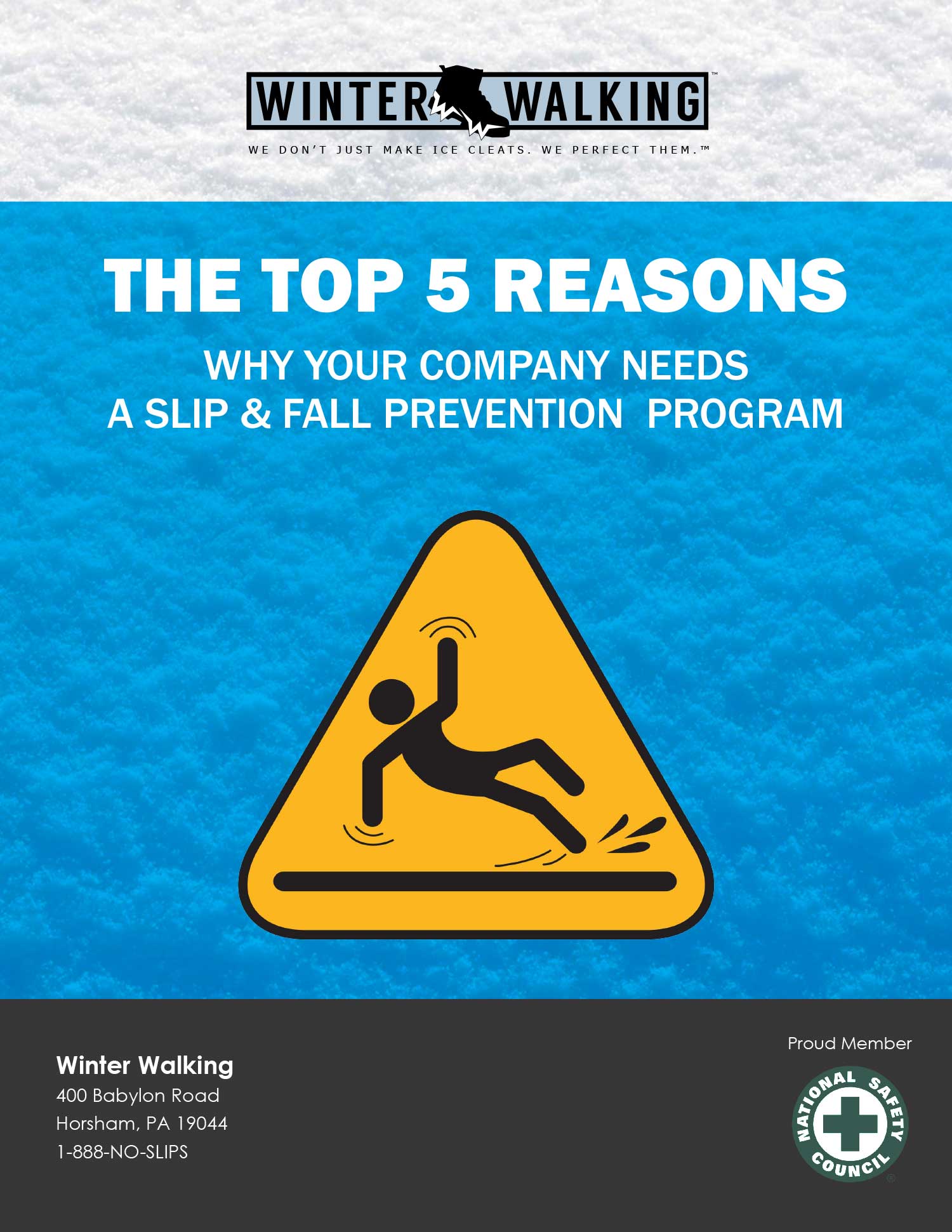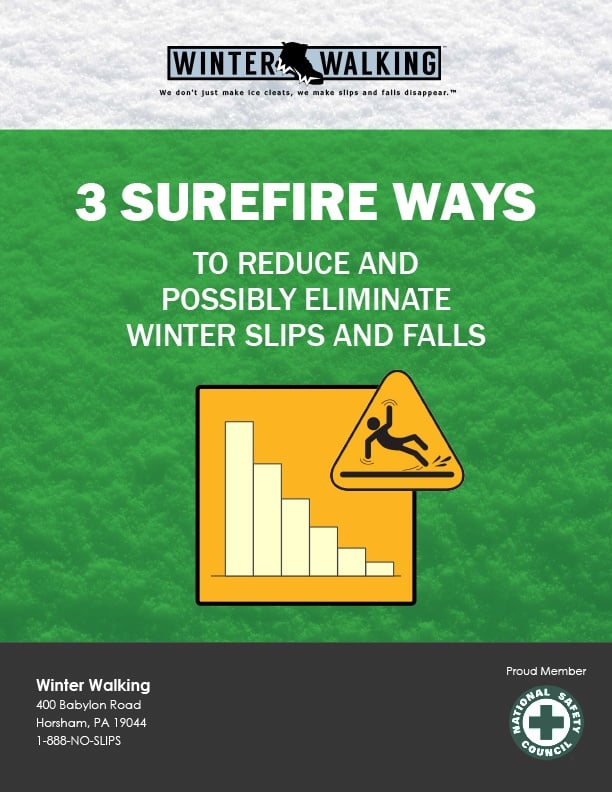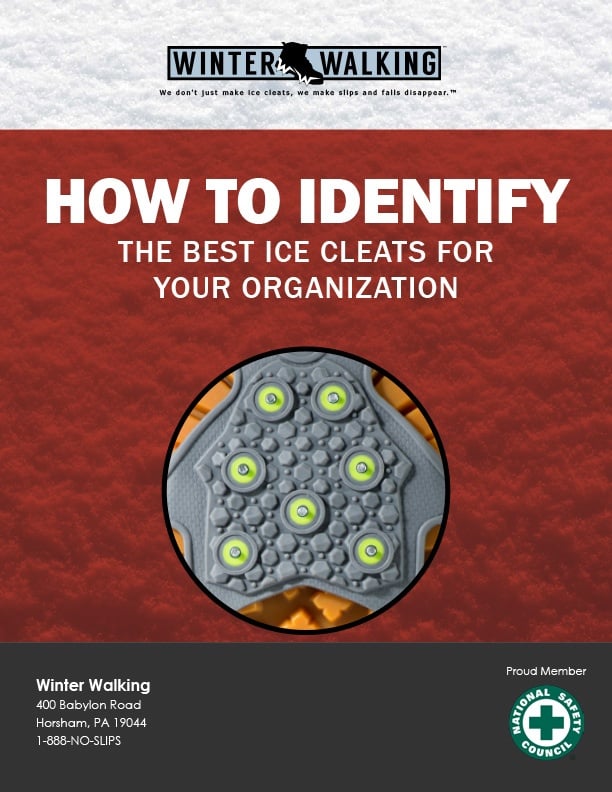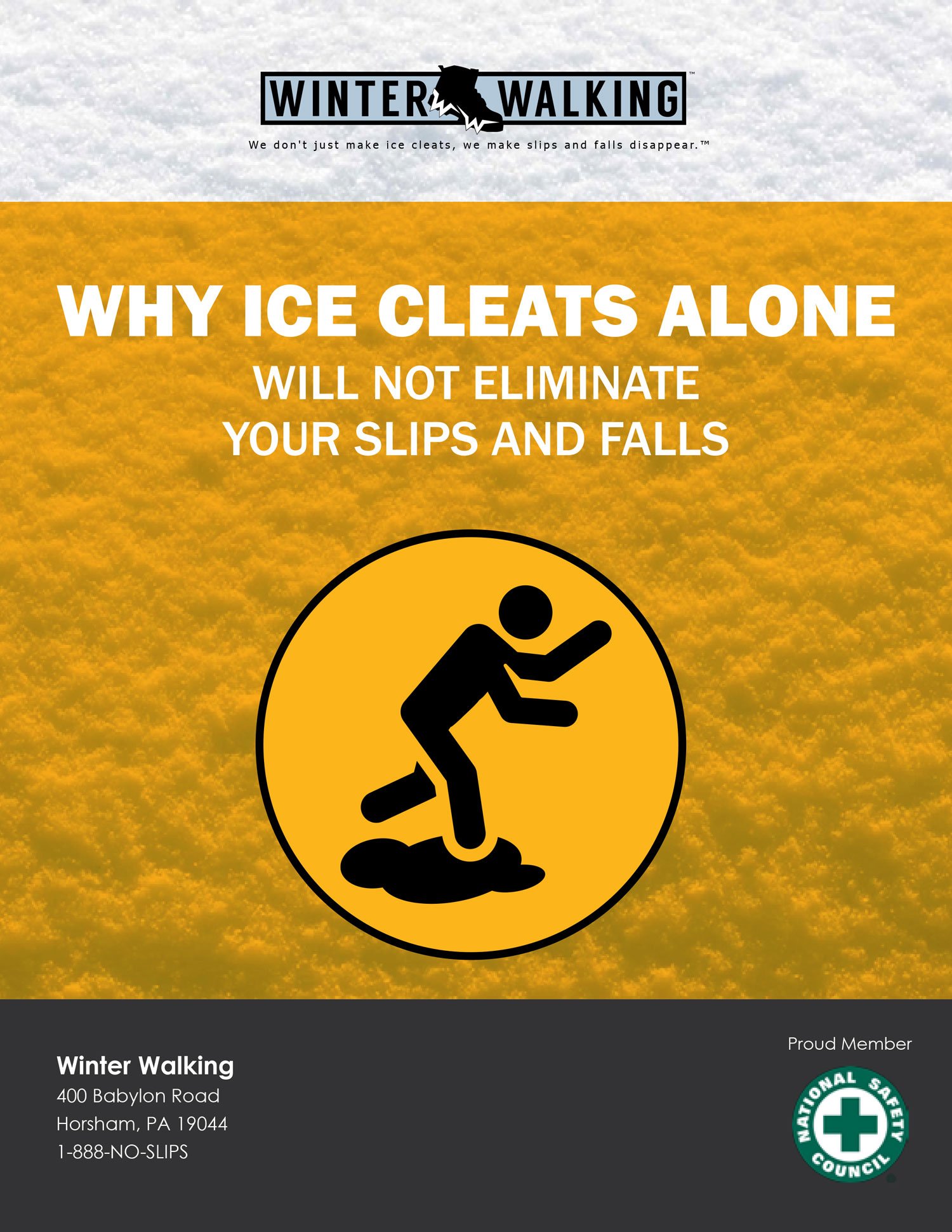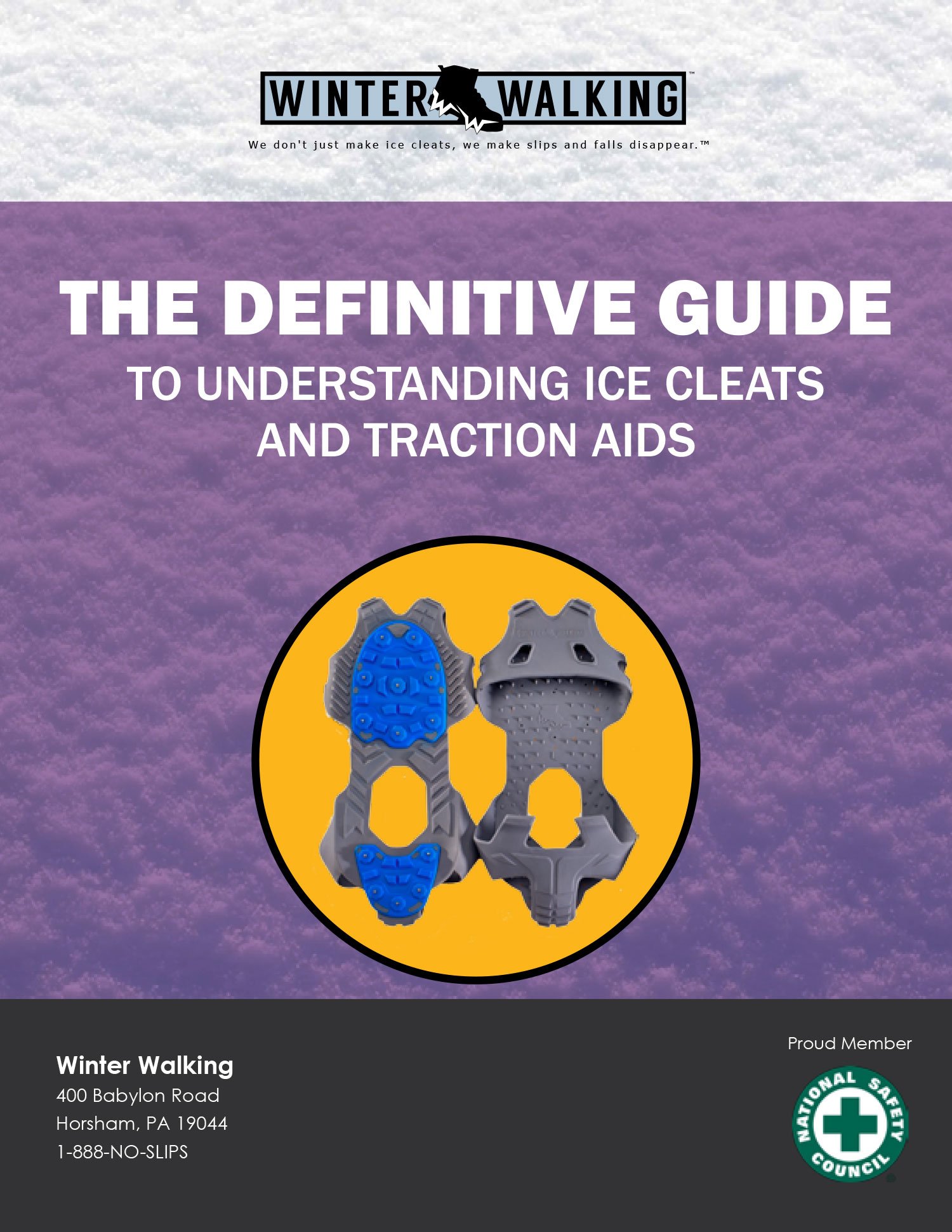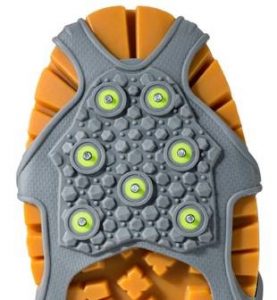 As a safety manager, this is the time of year your attention turns to winter prep. Storms are right around the corner and reducing winter slips and falls is sure to be on your mind.
As a safety manager, this is the time of year your attention turns to winter prep. Storms are right around the corner and reducing winter slips and falls is sure to be on your mind.
So, have you started your search for the perfect ice cleat or traction aid? And if so, have you made your decision on whether to use replaceable or permanent spikes. If you’re still making that choice, here’s some info that may help.
Replacing spikes in traction footwear is indeed a cost-saving option. It allows you to re-use existing footwear for just a few dollars a pair.
The downside? All replacement spikes will eventually fall out. After all, you can pop them in and out by hand, not screw-in cleats, so a foot that drags on the ground can easily dislodge a loose spike. And this increases the risk of slips and falls on ice and snow.
Often, the employee has no idea that the spike has fallen out. This fosters a false sense of security and it defeats the purpose of providing shoe traction devices to your workforce. If you choose replaceable spikes, it’s important to educate your employees about the potential for damaged or missing spikes and how to replace them.
We’ve had managers tell us about instances where replacement spikes fell out and the employee, unaware that the spike was replaceable, threw out the entire pair cleats. Then, they replaced them with a new pair, doubling the company’s expenditure.
When you use permanent spikes in winter traction aids, however, you dramatically increase the likelihood that your employees will be safer.
The spikes are engineered not to fail out in the field. And, in the long run, permanent spikes save you money:
- They’re durable enough to last two or more winter seasons before needing to be replaced.
- Employees won’t toss out shoes, as they may with replacement spikes, unaware that they’re fixable.
- The spikes are where they should be 100% of the time, giving employees peace of mind and reducing winter slips and falls.
If you’re debating the pros and cons of replaceable vs. permanent spikes, it’s certainly a discussion worth having. But be sure you take into account total cost, not just the cost to replace a few spikes. Your safety record will thank you.
Thank you for reading. If you found value in this post, please consider sharing it with your LinkedIn network or simply “like” it.
Bill Coyne is the VP of Sales for Winter Walking. He has been helping organizations across a wide variety of business sectors prevent workplace slips and falls in ice and snow for over 16 years. Winter Walking currently helps some of the world’s largest organizations keep their employees both safer and more productive while working outdoors in the winter season. Contact bill@winterwalking.com or visit www.winterwalking.com.


